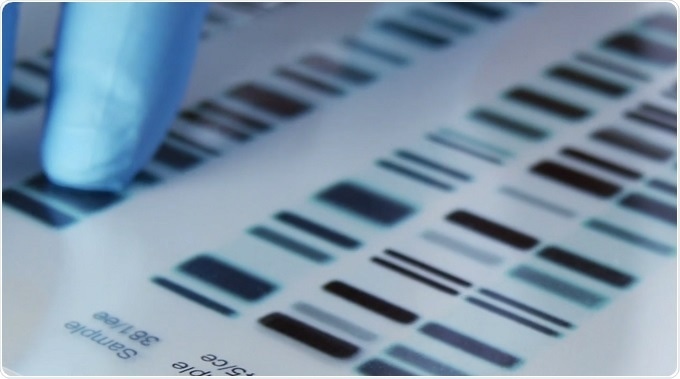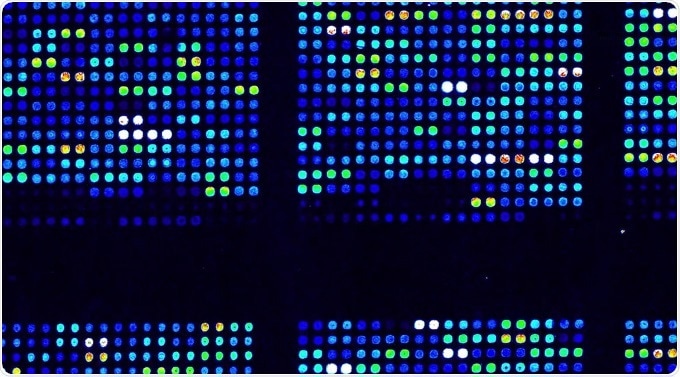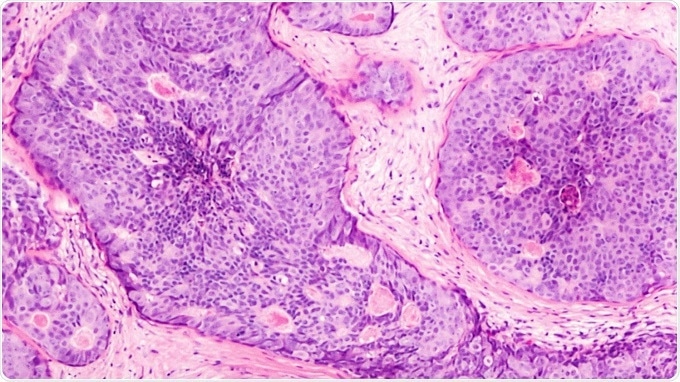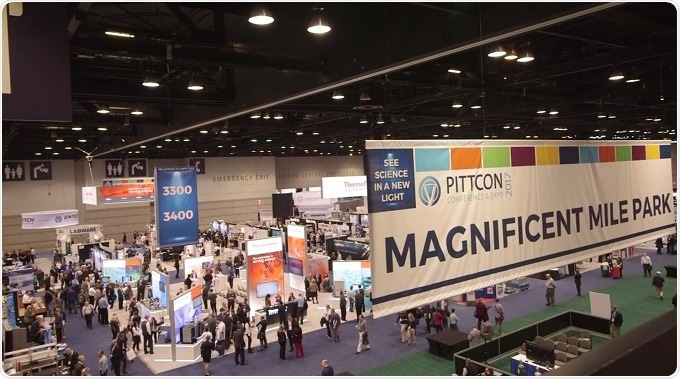Sponsored Content by PittconApr 10 2017
In this Pittcon interview, Jay Flatley, Executive Chairman of Illumina, gives an introduction to Illumina and the next generation genomics tools they provide.
Can you please give a brief history of Illumina?
Illumina was founded in 1998. It was based on technology invented by Dr. David Walt that was licensed from Tufts University and formed the basis of our microarray business. The fundamental invention was a unique way to put beads in wells that were created on fiber optic bundles, with the beads being imaged through the fibers.
Next Generation Microarray Technology and DNA Sequencing
Next Generation Microarray Technology and DNA Sequencing from AZoNetwork on Vimeo.
I joined the company in the October of 1999 and we went public in July of 2000, raising a $100 million, giving us the capital to develop our initial products.
We launched our first product in 2002, called the Illumina BeadLab. The BeadLab was designed to perform large-scale analysis of genetic variation.
We then continued to build a whole series of microarray products through the course of 2009 up to ones that included five million individual markers on a single BeadChip.
We entered the DNA sequencing business through an acquisition of a company called Solexa in 2007. We spent a year improving this technology, which was not yet quite ready for market. We grew that business from zero to $100 million in one year.

Over the course of the next five or six years we continued to improve that technology through the launch of a platform technology called HiSeq, which has taken the sequencing output from 1 gigabase (Gb) pairs per run on the initial Solexa product up to a system we just announced in January called NovaSeq, which does 6 terabase (Tb) pairs in a single run.
Our sequencers now operate at the rate of about one whole human genome per hour, in comparison to 2001 it required all the sequencers in the world to complete, taking a year to sequence a single human genome!
From all of that, we've now created a whole series of clinical applications in markets such as reproductive health, oncology screening and infectious disease. We've in turn spun off a number of companies, including GRAIL and Helix. In July of last year, I stepped down as the CEO of Illumina and I am now Executive Chairman.
What impact have next generation genomics tools had on our understanding of biology?
The microarray technology through the middle part of the last decade was responsible for the first large scale associations of generic variations with human disease. It was called the GWAS era, genome-wide association studies.

As a result, there have been many thousands of publications and genetic associations of locations where we vary in our genome and associated likelihood of getting diseases, or in the case of Mendelian diseases, the definitive relationships between genetic variation and development of a particular Mendelian disease.
We've also made tremendous strides in non-human applications, such as agriculture and microbiology, and in understanding the microbiome. So, this technology has been applied very broadly outside of human genetics as well.
What are the main healthcare applications of the technologies developed by Illumina?
We now have many applications that are purely clinical, the flagship application being non-invasive prenatal testing (NIPT).
In NIPT, a blood sample from a pregnant mother can be used to determine whether her baby has any number of genetic diseases, with Downs syndrome being the most common.
We do this by sequencing the entire genome of the DNA that we extract from the mother’s blood, and looking for extra copies of chromosomes that are contributed to that sequence. This can be achieved because the baby's DNA is present in the mother’s blood.
NIPT replaces the invasive amniocentesis procedure, and over the course of the last four or five years has become the frontline screen. We think it's the fastest ever adopted diagnostic test.
There are also many applications of our technology in sequencing cancer tumors and some of our customers use our sequencing technology for germline analysis. For example, Myriad Genetics does this for identifying variants in the BRCA gene to predict a women's likelihood of getting breast or ovarian cancer.

We also have a range of products that are used in sequencing solid tumors for determining the best therapeutic choice. And as we mentioned in our symposium, our spin off company GRAIL is using sequencing to create a cancer screen for asymptomatic patients.
Our view in the long run is that everyone is going to get sequenced. It's going to become part of the standard health record, and used to manage healthcare throughout an individuals lifetime.
What do you think the future holds for genomic information?
The size of genomic data that's being created now is quite astonishing. GRAIL alone over the next five to eight years will create more data than any other commercial company in the cloud. That's a critically important challenge in the storage of information.
Deep learning is increasingly important in our field because of the amount of genomic data that we're accumulating with phenotypic information from medical records, but also the genotypic information from the genome is now at a scale that no human can figure out exactly what questions to ask.
We're relying more and more on deep learning technologies in order to analyze those databases and create the correlations and extractions that are going to become medically relevant in the future.
Over what time frame are these changes likely to occur?
They've been happening over the last ten years and sequencing has now become amazingly economical. We can sequence a human genome for $1,000, which makes sequencing practical on a large scale.
Over the next five years, it’s likely we're going to see very important developments in the technology and the direct insertion of genomic information in healthcare records, deeply embedding sequencing in the healthcare system.
In the ten-year timeframe, we'll begin to see babies sequenced at birth on a reasonably routine basis. And a complete human genome sequence will be at a price point under $100.
In the next five years, we'll probably have a true cancer screen on the market that many people will be able to afford as part of their normal health physical.
What challenges will need to be overcome?
There certainly are many challenges, probably the biggest are reimbursement-related because these technologies are new, the payer system tends to respond reasonably slowly to change in healthcare, and it takes a compilation of lots of clinical evidence to convince payers to pay for these tests.
For example, now we have the ability to diagnose rare or undiagnosed disease in children incredibly effectively, but almost nobody reimburses that test today. Overcoming that hurdle is vital.
There are also regulatory barriers to overcome, and those barriers are different in each country. The FDA prevents us from creating certain types of information and returning it to consumers. That regulatory burden is quite high, and prevents many companies from actually developing and marketing their test at the rate that they could otherwise.
I think there will always ethical questions as well. In the long run, as the power of this technology becomes more understood, we'll have to ask ourselves ethical questions such as is it appropriate to run a complete genetic sequence of a baby that's unborn? And what is the appropriate use of that information and what isn't?
How do we prevent discrimination from the use of somebody's genetic information, whether that has to do with employment, or whether it has to do with medical or life insurance? There are many issues that will need to be carefully thought through.
What is Illumina’s vision?
The mission of our company is to improve human health by unlocking the power of the genome. and what that means is that we're continuing to push ever more aggressively on the technology front to make these technologies economically affordable and easier to use, so that they can become deeply embedded in the healthcare system. Because it's only then that we'll be able to use the power of understanding our genomes in order to improve human health. That's what Illumina is all about.
What was the focus of your talk at the Twenty-Eighth James L Waters Symposium on Genomic Analysis Technologies at Pittcon 2017?
I was charged with giving a high-speed history of Illumina. David Walt began by talking about the founding technology that he invented and how it got into Illumina. I then took it from there all the way up until today, and painted a quick history of what has happened to our company, what the major milestones have been, and where we're headed in the future.

We also had three of our customers talk about how they're using our technology. One of them was a company called Counsyl, who uses our technology for doing carrier screening. They described the evolution of what's happened in carrier screening, some of the historical limitations in doing point analysis or small panel analysis of carrier screens. And why sequencing is a much more powerful tool.
Then we heard from a consultant who's involved in implementations of non-invasive prenatal testing and who has previously been with Sequenom and was the CMO of Illumina. He also talked about the history of that test and its effectiveness, and showed some data on the sensitivity and specificity of that test and why sequencing is such an important tool.
Then we wrapped up with the Chief Technology Officer for GRAIL, who used to be the head of research at Illumina. He talked about the mission of GRAIL, the challenges of developing a cancer screen, and showed a reasonable amount of data about the different approaches and some of the challenges involved in developing that product.
Why Attend Pittcon?
Why Attend Pittcon? from AZoNetwork on Vimeo.
Where can readers find more information?
Our website, https://www.illumina.com/, is a fantastic resource for getting more information. As well as hundreds of articles about our company that can be found using a Google search for Illumina.
About Jay T. Flatley
 Jay led Illumina as CEO from 1999 until 2016 and now serves as Executive Chairman of the Board of Directors. During his tenure as CEO, he took the company from $1.3 million in sales in 2000 to $2.2 billion in 2015, representing a compound annual growth rate of 64 percent. He oversaw the company’s expansion from microarrays into next-generation sequencing with the acquisition of Solexa in 2006, and from research into clinical and applied markets.
Jay led Illumina as CEO from 1999 until 2016 and now serves as Executive Chairman of the Board of Directors. During his tenure as CEO, he took the company from $1.3 million in sales in 2000 to $2.2 billion in 2015, representing a compound annual growth rate of 64 percent. He oversaw the company’s expansion from microarrays into next-generation sequencing with the acquisition of Solexa in 2006, and from research into clinical and applied markets.
Under his leadership, Illumina was named multiple times to the Deloitte & Touche Fast 50 and Fast 500 lists, as well as to the Forbes 25 Fastest-Growing Tech Companies (2007, 2009 and 2010), the Fortune 100 Fastest-Growing Companies (2010 and 2011) lists, and recognition by MIT Technology Review as the World’s Smartest Company in 2014.
Jay chairs the Board of Directors for Illumina subsidiary, Helix. In addition to his work at Illumina, he is an Advisory Board member for UC San Diego’s Moore Cancer Center, and serves on the Boards of Directors at Coherent and Denali.
Previously, Jay served as President and Chief Executive Officer of Molecular Dynamics, later acquired by Amersham Pharmacia Biotech and now a part of GE Healthcare. As a co-founder and member of the board of directors for Molecular Dynamics he led the company to its initial public offering in 1993. While there, he also helped Molecular Dynamics develop and launch over 15 major instrumentation systems, including the first capillary-based DNA sequencer. Prior to joining Molecular Dynamics, Jay was Vice President of Engineering and Strategic Planning for Plexus Computers, Executive Vice President for Manning Technologies and held various positions at Spectra Physics.
Jay received a B.A. in economics from Claremont McKenna College and a B.S. and M.S. (summa cum laude) in industrial engineering from Stanford University.
About Pittcon
 Pittcon® is a registered trademark of The Pittsburgh Conference on Analytical Chemistry and Applied Spectroscopy, a Pennsylvania non-profit organization. Co-sponsored by the Spectroscopy Society of Pittsburgh and the Society for Analytical Chemists of Pittsburgh, Pittcon is the premier annual conference and exposition on laboratory science.
Pittcon® is a registered trademark of The Pittsburgh Conference on Analytical Chemistry and Applied Spectroscopy, a Pennsylvania non-profit organization. Co-sponsored by the Spectroscopy Society of Pittsburgh and the Society for Analytical Chemists of Pittsburgh, Pittcon is the premier annual conference and exposition on laboratory science.
Proceeds from Pittcon fund science education and outreach at all levels, kindergarten through adult. Pittcon donates more than a million dollars a year to provide financial and administrative support for various science outreach activities including science equipment grants, research grants, scholarships and internships for students, awards to teachers and professors, and grants to public science centers, libraries and museums.
Visit pittcon.org for more information.